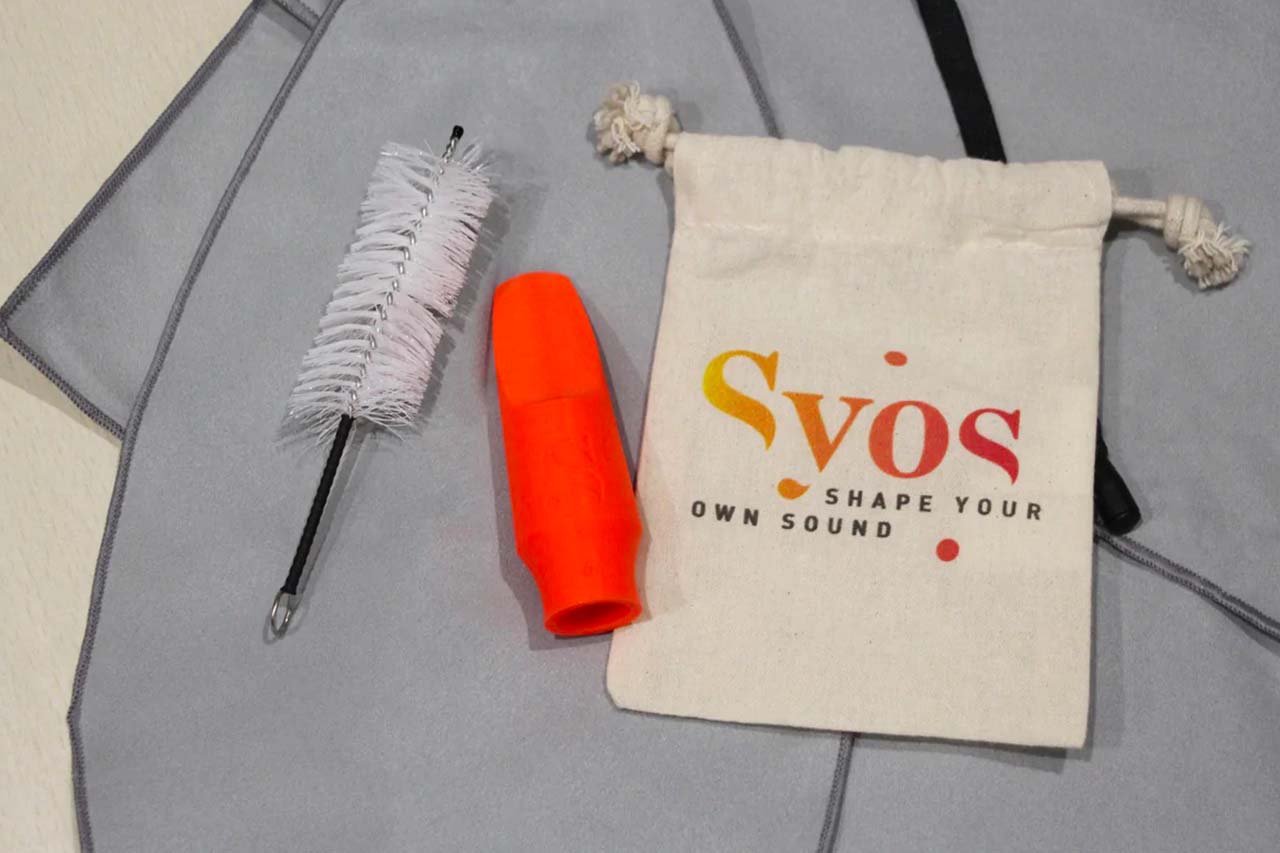This article focuses on a question that several saxophone players ask when they come to the Syos studio or when they order a custom mouthpiece so they can compare different versions of a mouthpiece with slight changes:
Why do saxophone mouthpieces come in different lengths?
To be clear, we are talking about mouthpieces for the same saxophone: two alto mouthpieces for example.
Some acoustic basics
To have a better understanding, let's first talk a little about acoustics. I promise it will be quick and simple. In acoustics, there is a direct relationship between the length of the vibrating part and the pitch of the sound. All you have to remember is:
The shorter, the higher.
With this generic rule, you're sorted. A soprano saxophone is small so it's high-pitched, a baritone is big so it's low-pitched. It's the same for string instruments: small strings are high register and long strings are low register. It's basically EVERYWHERE!
The saxophone is a metal cone
Now let's have a look at the saxophone. It's a cone made of metal that is cut in the upper part. The soprano retains this cone form, and the other saxophones are slightly hammered everywhere to form a bent cone. Otherwise the whole saxophone would be too big, making it hard to play.
Take a look at this diagram:

Fortunately, we visited the Selmer Factory a few months ago! In real life, the process is a bit more complicated (don't try this at home!) but I bet you've got the idea : the saxophone is a bent cone.
Blow in a pipe
Let's get back to acoustics: the pitch changes when the length changes. So if you blow in a pipe, the laws of physics say: the frequency is inversely proportional to the length of the pipe.

This law gives us the fundamental frequency of the pipe according to its length L and its diameter d, and the velocity of sound in the air V (which is approximately 334 m/s). For the cone, it's nearly the same as the cylinder so we can use the same law.
Let's check this with alto and tenor saxophones:
alto : Length = 1.20 m, Diameter = 0,1 m (around 10 cm). With the formula we find f = 134 Hz, which is (not exactly but very close) a D flat 3. If you close all the keys on the alto, which note do you get? D flat! (don't forget that the saxophone is a transposing instrument in Eb, so a B flat for the alto sax is a D flat for a pianist)
tenor : Lenght = 1.40 m, Diameter = 0,1 m (around 10 cm). With the formula we find f = 116 Hz, which is exactly A flat 2. If you close all the keys on the tenor, which note do you get? A flat!

The complementary volume
The point of this article was to talk about saxophone mouthpieces so let's get back to that. When you fix the mouthpiece on the cork, it will add some length to the pipe. When your intonation is too high or too low, you can push or pull the mouthpiece to change the pipe's length and the intonation changes accordingly.

What matters is the volume air that is added to the saxophone when the mouthpiece is placed on the cork: this volume is indicated in red in the above figure (V1 or V2). For an optimal fit between the mouthpiece and the saxophone, this volume must be a very precise value V* (that corresponds to the missing part of the cone we cut off with our scissors earlier in the article).
This value V* depends on the volume of the saxophone body, so it's about the same for all mouthpieces of a given saxophone kind (alto, tenor...). But of course, different models have different geometries. That's why, for example, "modern" mouthpieces don't work well on Old Conn Baritone, because it's missing volume V* is bigger than "modern" baritones.
Changing the complementary volume
Okay, we've seen that it's important to keep the complementary volume identical to have a good match between the mouthpiece and the instrument. But let's take a mouthpiece and slightly change something inside, like the baffle or the chamber: what happens?

The volume is smaller if the baffle is high or if the chamber is small (look at the figure above which is a little extreme). To keep the correct volume, in order to respect the sacred rule of complementary volume, we only have one solution: add some length to the mouthpiece shank!
Indeed, if the length of the cylinder is increased (while maintaining the same diameter) there will be more air volume in the mouthpiece to compensate for the decrease in volume after changing the baffle and chamber, therefore bringing back the volume to the holy value of V*.
Quiz to see if you understood
I'm sure you understood everything about air volume and the length of saxophone mouthpieces. So it's time to prove it, by answering the 3 following questions in the article comments:
Question 1 : I play on an old Conn baritone from the 30's that is too high in intonation, help me! What can I do?
A) Add some length to the mouthpiece B) Shorten the mouthpiece C) Change your saxophone, man
Question 2 : My Syos custom mouthpiece is amazing, but I would love for it to be less bright. The Syos soundshaper told me they would lower the baffle and enlarge the chamber:
A) The second version of my mouthpiece will have a longer shank B) The second version of my mouthpiece will have a shorter shank C) The second version of my mouthpiece will be the same length
Question 3 : In my hand I have two alto Syos mouthpieces that are exactly the same length. My conclusion is :
A) That they have the same chamber size B) That they have the same chamber size and the same baffle C) Nothing. I'm clueless.
So, what are your answers?













